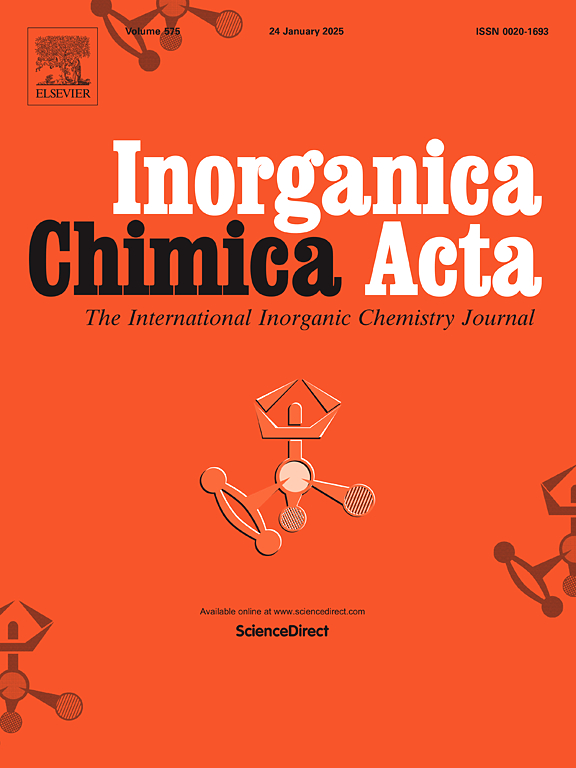Novel bis-carbacylamidophosphate and its complexes of rare earth elements
IF 2.7
3区 化学
Q2 CHEMISTRY, INORGANIC & NUCLEAR
引用次数: 0
Abstract
Considering the unfading interest in lanthanide-based luminescent materials the novel bis-chelating ligand tetramethyl(1,3-phenylenedicarbonyl)-bis-amidophosphate (H2L) was synthesized. Its coordination ability towards the rare earth elements and the effectivity of sensitization of their luminescence were investigated. X-ray analysis of H2L points on its chain- like structure created by means of hydrogen bonds N![]() H···O
H···O![]() P. The two series of binuclear complexes of rare earth elements Ln2L3(H2O)2·2H2O (Ln1) and Ln2L3bipy2·2H2O (Ln2), where Ln = Eu, Tb, Dy, Y and bipy = 2,2′-bipyridine, were obtained and characterized using elemental and thermal gravimetric analysis, IR, NMR, UV absorption spectroscopy at room temperature and luminescence spectroscopy at 298 and 77 K. The ligand absorbs in the UV region and effectively sensitizes the emission of EuIII, TbIII, and DyIII ions. The complexes of dysprosium emit in visible and NIR regions despite the presence of water molecules in the complexes compositions as well as despite that the enegry gaps between the ligands’ lowest triplet state and the emissive levels of DyIII are within the range for back energy transfer. The europium and terbium complexes possess bright respectively red and green luminescence with an emission lifetime at room temperature in the range of 1.13–2.60 ms.
P. The two series of binuclear complexes of rare earth elements Ln2L3(H2O)2·2H2O (Ln1) and Ln2L3bipy2·2H2O (Ln2), where Ln = Eu, Tb, Dy, Y and bipy = 2,2′-bipyridine, were obtained and characterized using elemental and thermal gravimetric analysis, IR, NMR, UV absorption spectroscopy at room temperature and luminescence spectroscopy at 298 and 77 K. The ligand absorbs in the UV region and effectively sensitizes the emission of EuIII, TbIII, and DyIII ions. The complexes of dysprosium emit in visible and NIR regions despite the presence of water molecules in the complexes compositions as well as despite that the enegry gaps between the ligands’ lowest triplet state and the emissive levels of DyIII are within the range for back energy transfer. The europium and terbium complexes possess bright respectively red and green luminescence with an emission lifetime at room temperature in the range of 1.13–2.60 ms.

求助全文
约1分钟内获得全文
求助全文
来源期刊

Inorganica Chimica Acta
化学-无机化学与核化学
CiteScore
6.00
自引率
3.60%
发文量
440
审稿时长
35 days
期刊介绍:
Inorganica Chimica Acta is an established international forum for all aspects of advanced Inorganic Chemistry. Original papers of high scientific level and interest are published in the form of Articles and Reviews.
Topics covered include:
• chemistry of the main group elements and the d- and f-block metals, including the synthesis, characterization and reactivity of coordination, organometallic, biomimetic, supramolecular coordination compounds, including associated computational studies;
• synthesis, physico-chemical properties, applications of molecule-based nano-scaled clusters and nanomaterials designed using the principles of coordination chemistry, as well as coordination polymers (CPs), metal-organic frameworks (MOFs), metal-organic polyhedra (MPOs);
• reaction mechanisms and physico-chemical investigations computational studies of metalloenzymes and their models;
• applications of inorganic compounds, metallodrugs and molecule-based materials.
Papers composed primarily of structural reports will typically not be considered for publication.
 求助内容:
求助内容: 应助结果提醒方式:
应助结果提醒方式:


